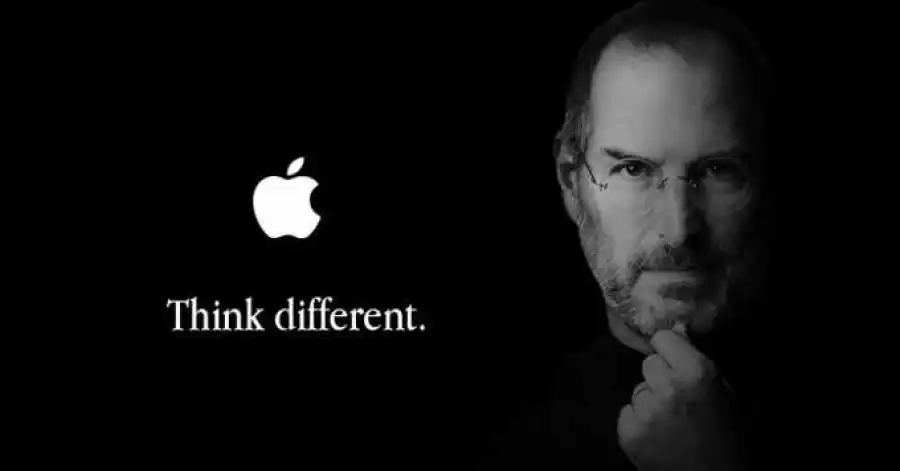5 things that Apple killed and helped technology move forward

5 things that Apple killed and helped technology move forward
Whether you like Apple or not, it's hard to argue that the company takes some bold risks and does certain things years before the competition dares to do them.
The list of features, ports and drives that Apple is killed is probably longer than similar achievements of all its Windows rivals combined, but since we're a mobile-first website, we were curious to reminisce and look back at the things that seemed like a necessity, an indispensable part of the phone and mobile computing experience that Apple killed.
5 THINGS THAT WERE CONSIDERED INEVITABLE BEFORE APPLE KILLED THEMOf course, that is a walk back further down memory lane, back to the original iPhone in many ways, but also a thing to give you more perspective when you are contemplating whether or not Apple was right to remove the 3.5mm headset jack in modern times. Of course, the particular reason why Apple kills a particular feature differs, but there is one common motif: the company is doing this to advance the future of technology in the way that it imagines it.
Here are the five key steps it took in mobile, the 5 technologies that Apple killed for this grand idea.
#1: The stylus as a necessity
Related dates and products: The original iPhone in 2007 with its multi-touch display and finger-optimized iOS
Steve Jobs was an outspoken person. In a world of corporate mumbo-jumbo, he spoke frankly and without meaningless fluff. That's why you should not be surprised that in times when mobile devices featured stylus not for artistic reasons, but to control the everyday experience, he was short and adamant: "if you see a stylus, they blew it."
A huge part of the appeal of the original iPhone and then the iPad was the fact that both used a very precise multi-touch display that one could easily navigate with their fingers. Apple did the tough job of also writing iOS in a completely finger-friendly manner. This huge undertaking showed how much more efficient can a smartphone experience be. From there on, it took a couple of years for others to catch up, but eventually they did and the stylus-as-a-necessity concept faded away into history. Good riddance!
#2: The 'button phone'
Related dates and products: The original iPhone in 2007 with its multi-touch display and finger-optimized iOS
Steve Ballmer's reaction to the original iPhone is probably the single most shared moment that represents the old versus new clash, the modern versus outdated. There, Ballmer, chief executive of Microsoft at the time, laughs the iPhone off and says that it will not appeal to business customers because it does not have a keyboard.
Mr. Ballmer should have probably first used the iPhone more extensively before making a fool out of himself, but while he could ignore reality at the time, he could not ignore the consequences of reality a few years later. Then, Microsoft was practically forced to enter the market, which it did too late with its Windows Phone platform, with phones that mostly did not have a physical keyboard. These days, the concept of a physical keyboard on a phone feels antique and inadequate, and for most, it's also been a good riddance.
#3: Software shipping in physical boxes
Related dates and products: Apple App Store launch in 2008 brought the times of centralized, easy online app distribution
5 things that Apple killed and helped technology move forward
Most of you, our readers, probably have never in their life bough a piece of software in a box. Ask most cool kids around, and they'd tell you that it makes no sense when you can just press the 'buy' / 'download' buttons on your phone or computer.
Just 8 years ago, though, there were no web application stores that would sell popular apps around. Apple first introduced the App Store some 8 years ago, in 2008, and not too long after Android followed suit with the Android Market that eventually was renamed into the Google Play Store. Microsoft was the last to make its app store with the Windows Marketplace.
At the end of the day, some 8 years after the original Apple App Store, it's hard to imagine going back to ordering software and shipping it in boxes. It's another thing that Apple killed and that was a great riddance.
#4: Forcing users to deal with task managers
Related dates and products: iOS released in 2007 signaled a world where task managers are no longer a necessity
5 things that Apple killed and helped technology move forward
Computers back in the day were not something for the general public. We probably don't need to tell you, but some ten years ago, the worst thing about buying a computer as a gift to your parents or girlfriend was that you were effectively signing a long-year contract about also becoming their tech support. And this was no surprise: having to deal with task managers, terminals and so on is no easy task and for the computer illiterate was innerving and frustrating.
Apple's iPhone bet on simplicity: "in multitasking, if you see a task manager... they blew it. Users shouldn't ever have to think about it." The famous quote belongs to Steve Jobs, and these days is also repeated as a mantra for modern operating systems, including Android. Getting effectively rid of the need for dealing with a task manager is another great achievement of Apple in the mobile space.
#5: Floppy disks, CD / DVD disks, etc
Related dates and products: iMac in 1997 kills the floppy drive, Macbook Air in 2008 kills the CD / DVD drive
5 things that Apple killed and helped technology move forward
Last but not least, Apple is known as the company that killed the floppy disk, the CD / DVD drive, and seems to be aiming towards the death of USB flash drives. The death of the floppy drive started in 1997, when Steve Jobs returned to Apple and unveiled the streamlined new iMac that has a CD / DVD drive, but lacked a standard-for-the-times floppy drive. The next big step came in early 2008 with the introduction of the razor thin Macbook Air, a laptop for the masses that lacked a CD / DVD drive.
These days, some laptops still ship with a CD / DVD
drive, but that's mostly seen as a thing of the past, a relic that the market has to get over very soon. Having lived in an Apple-driven world of less drives, though, has made us more comfortable with a wireless transfer system that promises to be the staple of future phones.







![Snake Skin Beauty (2024) [Chinese]](https://www.memesng.com/r/storage.waploaded.com/images/ef481e7e5ad06fe603d588a2f2e17b90.jpg?w=50&ulb=true&ssl=1)
![My Dear Donga (2024) [Telugu]](https://www.memesng.com/r/storage.waploaded.com/images/536e471183e6285f2621d5e66511aceb.jpg?w=50&ulb=true&ssl=1)
![La Soga 3 Vengeance (2023) [Spanish]](https://www.memesng.com/r/storage.waploaded.com/images/920fbd2c4e72b0f304a41aa7b09cffe9.jpg?w=50&ulb=true&ssl=1)
![Yavarum Vallavare (2024) [Tamil]](https://www.memesng.com/r/storage.waploaded.com/images/1f00382110f5c04439cd284879674537.jpg?w=50&ulb=true&ssl=1)










![Suji and Uri (2024) [Korean] (TV series)](https://www.memesng.com/r/storage.waploaded.com/images/394b198e59e3725ad4fa904e225d43dc.jpg?w=50&ulb=true&ssl=1)
![In Cold Blood (2024) [Korean] (TV series)](https://www.memesng.com/r/storage.waploaded.com/images/64d0b2050777280ade35b2797b34c503.jpg?w=50&ulb=true&ssl=1)
![Hard to Find (2024) [Chinese] (TV series)](https://www.memesng.com/r/storage.waploaded.com/images/cbbaa0d3ae912198b992a53af30d2361.jpg?w=50&ulb=true&ssl=1)
{{comment.anon_name ?? comment.full_name}}
{{timeAgo(comment.date_added)}}
{{comment.body}}
{{subComment.anon_name ?? subComment.full_name}}
{{timeAgo(subComment.date_added)}}
{{subComment.body}}